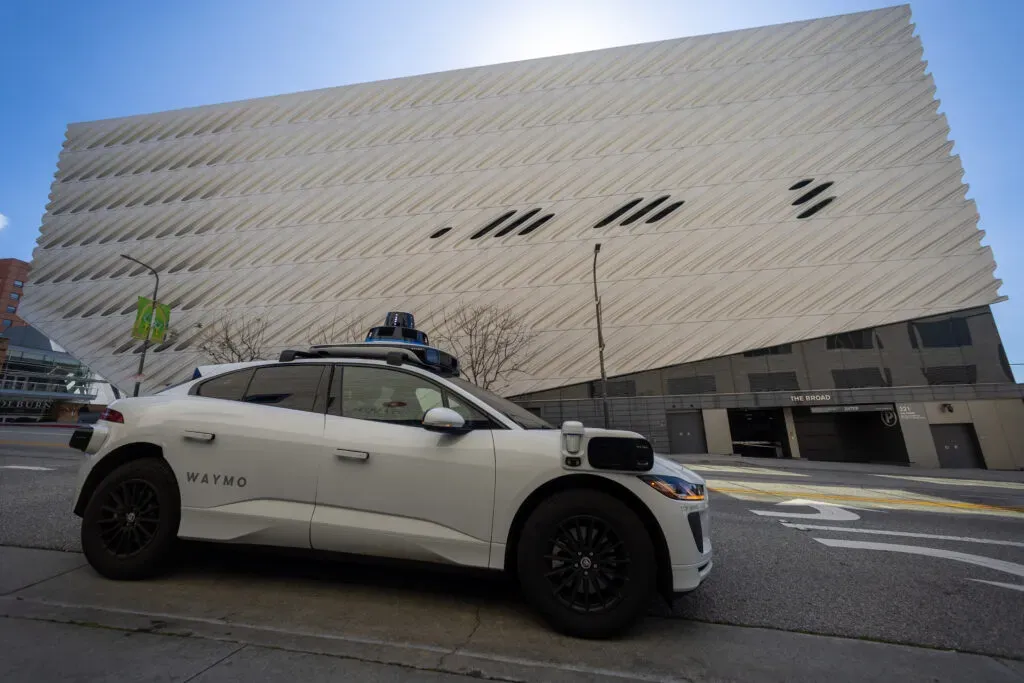Waymo expansion is making waves in the world of autonomous transportation, as the company broadens its ride-hailing services in Los Angeles and San Francisco. With the recent launch of its self-driving taxi fleet in November, Waymo has quickly emerged as a pioneer in the realm of driverless vehicles, transforming how residents experience mobility. This expansion allows riders to experience the convenience of Waymo’s electric Jaguar I-Pace taxis over an extensive service area of more than 120 square miles, encompassing vibrant neighborhoods from Santa Monica to Inglewood. As Waymo continues to revolutionize urban mobility, the demand for their autonomous taxis in Los Angeles only grows, reflecting the public’s eagerness to embrace this innovative form of transport. By enhancing accessibility to a broader clientele, Waymo solidifies its reputation as a leader in the autonomous taxi industry, poised to redefine commuting in major cities across the country.
The latest developments concerning Waymo’s ride-hailing capabilities indicate a significant shift in urban transportation solutions. Known for its fleet of sophisticated self-driving vehicles, the expansion of Waymo’s operational range heightens the availability of autonomous taxi services in metropolitan settings like Los Angeles and San Francisco. As more people turn to robotic taxis for their travel needs, the integration of cutting-edge technology promises an even safer and more efficient travel experience. The increased reach of this innovative service not only showcases Waymo’s commitment to enhancing urban mobility but also underlines its potential to lead the future of public transportation. In summary, the ongoing growth of Waymo’s service area is set to provide commuters with unprecedented access to autonomous ride options.
Waymo Expansion in Los Angeles: A New Era of Autonomous Travel
Waymo’s recent expansion in Los Angeles marks a significant milestone for the autonomous taxi industry. The company has increased its service area to cover over 120 square miles, offering electric Jaguar I-Pace rides across bustling neighborhoods like Santa Monica, West Hollywood, and downtown Los Angeles. This growth reflects Waymo’s commitment to making self-driving technology accessible to a wider audience, allowing more passengers to experience the convenience and safety of autonomous rides. By leveraging advanced sensors and lidar technology, Waymo is not just enhancing mobility; it’s transforming urban transportation as we know it.
As riders hail their Waymo taxis from popular spots like Echo Park and Silver Lake, the company differentiates itself with safety statistics. According to Waymo, their self-driving vehicles encounter significantly fewer accidents compared to traditional vehicles, making them a safer alternative. The ongoing expansion of Waymo’s service area is expected to attract even more users to their ride-hailing platform, which already boasts over 250,000 rides per week. This continuous push towards broader service geographies showcases Waymo’s ambition to dominate the market for autonomous transportation.
Waymo Self-Driving Taxi Services: Revolutionizing Urban Mobility
Waymo’s self-driving taxi services are changing the landscape of urban mobility across major cities like Los Angeles and San Francisco. With their innovative ride-hailing applications, users can conveniently summon a Waymo vehicle at the tap of a button, making transportation simpler and more efficient. The integration of such technology has not only streamlined the way people book their rides but also minimized the complications associated with traditional taxi services. By incorporating features that allow for easy navigation in bustling markets, Waymo is setting new standards for urban transport.
The promise of autonomous taxis introduces a new level of accessibility for urban dwellers, fostering an environment where reliable transportation is readily available for everyone. With Waymo’s growth in service coverage, including new areas in Los Angeles, more residents will have the chance to utilize these self-driving vehicles daily. This transition towards an autonomous fleet plays a vital role in reducing traffic congestion and our overall carbon footprint, aligning with broader environmental goals within urban planning initiatives.
The Future of Waymo Ride-Hailing: Expanding Beyond Borders
Waymo continues to push the boundaries of ride-hailing services, with plans to expand beyond Los Angeles and San Francisco. The introduction of self-driving taxis in cities like Miami and Washington, D.C., is a testament to Waymo’s ambitious vision for the future of transportation. By consistently trialing their advanced technology in new environments, Waymo is not only enhancing service efficiency but also refining their operational methodologies based on real-world data collected from different urban landscapes. The goal is to create a seamless and user-friendly experience regardless of location.
Waymo’s strategy also includes integrating its services with popular platforms like Uber, expanding the reach of their autonomous taxis. This collaboration indicates a trend where established ride-hailing companies might shift towards leveraging self-driving technology for their operations. Such partnerships will likely pave the way for innovative solutions to urban mobility problems, emphasizing the need for collaboration to maximize technology’s potential in public transit.
Safety and Innovation: The Backbone of Waymo’s Autonomous Fleet
Safety remains a top priority for Waymo as evidenced by the company’s impressive safety statistics, indicating a significant reduction in accident rates compared to traditional vehicles. By utilizing an array of advanced sensors and artificial intelligence, Waymo ensures that its autonomous taxis navigate the complexities of urban environments with dexterity and precision. This focus on innovation places Waymo at the forefront of the self-driving revolution, as they continue to refine their technology in response to real-world challenges.
The reliance on data-driven decisions allows Waymo to continually improve and adapt their safety measures, ensuring not only the protection of passengers but also building trust among the public. The impressive performance of these self-driving vehicles in reducing accident rates serves as a compelling argument for their widespread adoption in cities across the globe. Waymo’s commitment to safety and ongoing innovation encapsulates the future trajectory of transportation technology.
The Impact of Waymo’s Expansion on Local Communities
As Waymo expands its service areas in cities like Los Angeles, the impact on local communities becomes increasingly significant. The introduction of autonomous taxis provides residents with new transportation options, which is particularly beneficial for those without access to personal vehicles. This increased mobility can enhance community connectivity and provide economic opportunities for local businesses as more riders venture out to explore their neighborhoods.
However, there are also challenges associated with the expansion of autonomous vehicle services. Issues such as community acceptance, potential job displacement in the taxi industry, and concerns over privacy and data security must be addressed. Waymo’s engagement with local stakeholders is essential to navigate these complexities, ensuring that the benefits of their technology are shared equitably across all communities.
Waymo’s Technological Advancements: Pioneering the Future of Mobility
At the heart of Waymo’s success is a suite of technological advancements that facilitate the operation of its autonomous taxis. From sophisticated radar systems to high-definition cameras, Waymo’s fleet is equipped to handle various driving conditions, ensuring a safe and smooth ride for passengers. This technological prowess not only enhances user experience but also positions Waymo as a leader in the research and development of self-driving vehicles. As the company continues to innovate, the potential applications for such technology stretch far beyond personal transportation.
The collaborative efforts in software and hardware development within Waymo’s team underline the importance of an integrated approach to achieving full autonomy. With ongoing testing and real-time feedback, the continuous enhancement of their operational capabilities sets a benchmark in the autonomous vehicle sector. The lessons learned from Los Angeles, San Francisco, and beyond will undoubtedly inform future developments, potentially shaping the very fabric of transportation in urban environments.
Exploring Waymo’s Environmental Impact through Autonomous Technology
One of the critical advantages of Waymo’s expansion is its potential to positively impact the environment. As electric vehicles make up the entirety of Waymo’s fleet, the company contributes to reducing carbon emissions in urban centers. The transition from traditional gasoline-powered vehicles to electric autonomous taxis could significantly decrease air pollution, improving air quality for city residents. This eco-friendly approach aligns with global sustainability goals and reinforces the role of technology in addressing climate change.
Moreover, by optimizing transportation routes and reducing traffic congestion, Waymo’s self-driving taxis can contribute to more efficient traffic flow in crowded cities. The potential for fewer vehicles on the road due to the shared nature of ride-hailing services means that urban transportation could become more sustainable overall. As Waymo continues to expand, the focus on environmental impacts will remain a central theme in fostering more livable urban spaces.
Waymo’s Competitive Edge in the Autonomous Taxi Market
Waymo has carved out a competitive edge in the burgeoning autonomous taxi market through strategic planning and continuous investment in technology. With a robust service network already in place in major cities like Los Angeles and San Francisco, the company leads the race against other entrants in the industry. Their experience in real-time data collection and analysis allows for rapid adaptation to changing urban environments, providing them with an initial advantage compared to newer competitors.
Moreover, Waymo’s ability to demonstrate proven safety metrics and operational efficiency sets them apart in a market that is becoming increasingly crowded. Through partnerships, innovative app experiences, and a commitment to public safety, Waymo is not just racing to capture market share; they are redefining what it means to travel within an urban landscape. As competition heats up, the emphasis on reliability and customer service will continue to play a significant role in their ongoing success.
The Role of Consumer Trust in Waymo’s Growth Strategy
As Waymo expands its operations, consumer trust is paramount to the adoption of autonomous taxi services. The company’s strong track record, demonstrated by their impressive safety statistics, helps to alleviate some concerns that potential riders may have regarding self-driving technology. Building and maintaining this trust plays a crucial role in Waymo’s marketing strategy as they reach out to a broader audience beyond early adopters.
To further enhance consumer confidence, Waymo is likely to engage in outreach programs that educate the public about self-driving technology and its benefits. Transparency regarding safety protocols and data usage is essential to overcoming skepticism. As autonomous ride-hailing becomes more commonplace, fostering a strong relationship with consumers will be vital for Waymo to secure its position as a household name in the autonomous transportation market.
Frequently Asked Questions
What cities are included in the expanded Waymo service area in Los Angeles?
The expanded Waymo service area now covers over 120 square miles in Los Angeles County, including Santa Monica, West Hollywood, Inglewood, Playa del Rey, Ladera Heights, Echo Park, Silver Lake, and the entirety of Sunset Boulevard.
How has Waymo ride-hailing service performed since its launch in Los Angeles?
Since launching in November, Waymo’s autonomous ride-hailing service has deployed around 100 self-driving vehicles, providing over 250,000 paid rides per week, and has traveled over 30 million miles without human intervention.
What safety data has Waymo shared regarding its autonomous taxis?
Waymo reports that their self-driving taxis experience 81% fewer airbag deployment crashes, 78% fewer injury-causing crashes, and 62% fewer police-reported crashes compared to traditional vehicles operating in similar conditions.
Is Waymo planning to expand beyond Los Angeles and San Francisco?
Yes, Waymo intends to expand its service to several new cities including Miami, Atlanta, and Washington, D.C., in addition to its existing presence in Los Angeles and San Francisco.
What features do Waymo self-driving taxis utilize for navigation and safety?
Waymo’s self-driving taxis utilize an array of cameras, sensors, and lidar technology to navigate roads autonomously, ensuring safety and efficiency during rides.
Can I use the Waymo app for ride-hailing in the newly expanded areas?
Yes, passengers can download the Waymo app to request rides from the newly expanded service areas in Los Angeles, including popular neighborhoods and commercial areas.
What operational challenges has Waymo faced in Los Angeles?
Waymo temporarily halted services in downtown Los Angeles due to vandalism and arson of its vehicles during anti-ICE protests, highlighting some operational challenges encountered in the area.
When did Waymo start testing its autonomous vehicles on Los Angeles freeways?
Waymo began testing its robotaxis on Los Angeles freeways earlier this year, in preparation for the expanded service and to ensure safety in various driving conditions.
Are there any additional locations covered in the Waymo San Francisco expansion?
Yes, the Waymo San Francisco expansion includes locations such as the San Francisco Peninsula, Mountain View, Palo Alto, Menlo Park, South San Francisco, San Bruno, Millbrae, and Burlingame.
How can passengers ensure a safe ride with Waymo’s autonomous taxis?
Passengers can ensure a safe ride by following instructions provided in the Waymo app and remaining aware of local driving conditions, knowing that Waymo’s technology is designed to prioritize safety.
| Key Point | Details |
|---|---|
| Expansion of Service Area | Waymo is expanding to cover over 120 square miles in Los Angeles County, including key areas such as Santa Monica, West Hollywood, and Inglewood. |
| Vehicle Type | Passengers will ride in electric Jaguar I-Pace vehicles equipped with Waymo’s self-driving technology. |
| Performance Statistics | Waymo’s vehicles have seen a reduction of 81% in airbag deployment crashes and 62% in police-reported accidents compared to traditional cars. |
| Current Operations | Waymo currently offers over 250,000 paid rides weekly with vehicles operating autonomously across multiple cities including Phoenix and San Francisco. |
| Future Expansion Plans | Waymo plans to expand its services to Miami, Atlanta, and Washington D.C., along with Uber integration in Austin, Texas. |
Summary
Waymo expansion has recently taken a significant leap forward with the enlargement of its service area in Los Angeles. After starting its operations in November, Waymo is now set to provide rides across a much larger part of Los Angeles County, effectively reshaping the public transportation landscape. By utilizing advanced self-driving technology and electric vehicles, Waymo demonstrates its commitment to innovative transportation solutions while also prioritizing safety and efficiency in urban environments.



